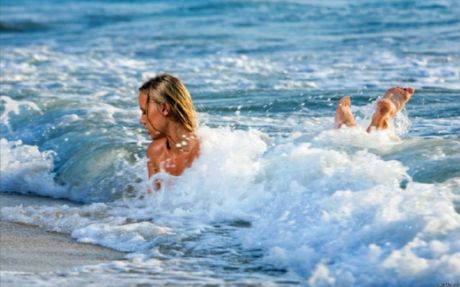New publications
Bathing: basic safety precautions
Last reviewed: 01.07.2025

All iLive content is medically reviewed or fact checked to ensure as much factual accuracy as possible.
We have strict sourcing guidelines and only link to reputable media sites, academic research institutions and, whenever possible, medically peer reviewed studies. Note that the numbers in parentheses ([1], [2], etc.) are clickable links to these studies.
If you feel that any of our content is inaccurate, out-of-date, or otherwise questionable, please select it and press Ctrl + Enter.
Summer is the time for vacations and travel. And swimming is one of the most pleasant pleasures of the coming season. How to swim correctly, so as not to get yourself health problems?
Bathing itself is one of the health and hardening procedures and is often even recommended by doctors for certain health problems. Especially bathing in sea water - it improves metabolic processes in the body, tones the nervous and circulatory systems, is useful for some diseases of the respiratory system and some joint diseases.
Hypothermia is the most common problem when swimming. This should be remembered by those who are prone to frequent colds, have problems with blood vessels. It should be taken into account that salty sea water cools the body more than fresh water. You need to move actively in the water, and you should not swim until "goose bumps" appear. After going ashore, it is advisable to rub yourself with a towel and change into a dry swimsuit.

Note: in cool water, leg muscles are more likely to cramp. Anyone who is prone to this turn of events should not swim far from the shore and preferably have a pin attached to their swimsuit. This is an emergency aid for a sudden cramp: quickly unfasten, prick the numb area a couple of times - mobility will soon be restored.
Particular caution should be exercised when swimming in stagnant fresh water bodies, as it is much more common to pick up some kind of infection, especially if ducks, geese, seagulls swim in the body of water, or cattle come to drink. The most common infection is E. coli, which can also cause an allergic reaction. Another unpleasant affliction is cercariosis, or "swimmer's itch", which can be picked up by staying in the water for literally 10-15 minutes or even by walking barefoot on the wet grass on the shore. After 30-40 minutes, the body begins to itch unbearably, becomes covered with blisters similar to mosquito bites, and this itching continues for several days.
The causative agents are the larvae of waterfowl helminths - cercariae, which emerge from the body of intermediate hosts (pond snails - river mollusks), move freely in the water and penetrate the skin of waterfowl and humans. Signs of cercariosis: itching or burning, tingling and redness of the skin on the shins, thighs, buttocks, the appearance of a rash and blisters, dizziness and weakness; with severe damage, a dry cough and fever may appear. Menthol ointment, soda solution will help alleviate the condition and reduce itching, but a visit to the doctor is mandatory. The disease lasts about a week, and skin pigmentation and mild itching persist for up to 3 weeks.
When swimming in the sea, especially somewhere in distant and hot regions, beware of jellyfish stings and encounters with the "Portuguese man-of-war".
When swimming, certain safety precautions should be observed:
- Don't rush into the water as soon as you appear on the beach. Sudden temperature changes can cause vascular spasms. Give your body 15 minutes to adapt to the beach microclimate, and then calmly enter the water and start swimming.
- Try to swim only in warm weather – not lower than 23 degrees in the air. And do not try to spend half a day in the water on the very first day of the opening of your personal swimming season – for starters, it is enough to swim once.
- Never dive in unfamiliar places! You can not only get seriously injured by rocks and snags, but also get an injury incompatible with life. They trumpet about it every summer, but people still die for this reason every year.
- Special attention should be paid to the combination of food and bathing: there should be an interval of 1 hour in either direction between the two. That is, you cannot overeat either before or immediately after bathing.
- In the south, try to swim mainly in the morning – from 9 to 12 o’clock, and in the evening – after 17 o’clock. Devote a hot day to other types of recreation and leisure – sit in a cool cafe, walk in the park, go on an excursion.
- Remember that you can't swim in a stormy sea, 3-4 points is the ceiling. But if you take a risk and get caught in a wave that carries you away from the shore, calm down, relax your body and try to stay on the crest of the wave. As soon as the wave rushes to the shore, try to jump out of it as far as possible in the direction of the shore and move to the exit of the water as quickly as possible before the next wave catches up and carries you away.
After each swim, if possible, rinse your body with clean fresh water or at least dry yourself thoroughly with a towel. And when you return from the beach, rinse your mouth and throat thoroughly, wash your nose and ears, and take a shower with a soft gel, then apply a moisturizer to your skin.
